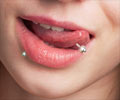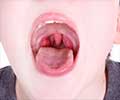Introduction:
Oral and peri-oral piercing involves the insertion of jewellery into the tongue, upper or lower lip, cheek, frenum, uvula or other parts of the mouth, which has long been practiced for religious, tribal, cultural, sexual or identity reasons (
1✔ ✔Trusted Source
Oral/perioral piercing
Go to source).
The earliest known representation of this piercing was in the figure of a dog created in Egypt in around 1500 BC when it was considered a symbol of royalty. For ancient Mayans, piercing was a symbol of spirituality, virility and courage. Eskimos inserted a 'labret' into the lower lip as a symbol of passage to adulthood in boys and as an act of purification in girls. The piercing of lips, cheeks or tongue was also a traditional practice in Hindu, Chinese and American Indian cultures. In Southern India, a vow of silence was accompanied by tongue piercing (
2✔ ✔Trusted Source
Multiple dental fractures following tongue barbell placement: a case report
Go to source).
In developed countries, piercing became fashionable with the punk movement and then as part of a wider 'body art', i.e., the voluntary modification of physical appearance by
tattoos, branding, scars or piercing (
3✔ ✔Trusted Source
Some considerations about oral piercings
Go to source). Hypoallergenic and non-toxic materials are used for piercing jewellery, e.g., 14 or 18K gold, titanium, stainless steel, niobium, tygon, acrylic, stone, wood, bone, or ivory.
Four types of piercing jewellery are applied in the oral region . One type is the labret piercing where a bar with a ball, disc or point at one end and a flat closing disc at the other is used. Another type is the barbell, a straight or curved bar with balls at each end. A third type is an unclosed ring with a ball at one or both ends. In a fourth type, two components of the stud are held together by a magnetic force 10-fold greater than that of a conventional magnet.
Researchers have reported the adverse effects that can be produced during the act of piercing and as a result of the constant presence of this jewellery.
The quiz on lip piercings can be used by adults to familiarize them with some interesting information.
There are 10 questions on lip piercings in this quiz that will help answer some of the following questions on lip piercings
-
Material used (4✔ ✔Trusted Source
Oral and perioral piercing: a unique form of self-expression.
Go to source)
- Complication (5✔ ✔Trusted Source
Oral and Perioral Piercing Complications
Go to source)
- Labret piercing (11✔ ✔Trusted Source
About Oral and perioral piercing complications
Go to source)
- Difference between Madonna and Monroe lip piercing (8✔ ✔Trusted Source
Oral and dental complications of intra-oral piercing
Go to source)
- Snake-bite piercing (1✔ ✔Trusted Source
Oral/perioral piercing
Go to source)
- Healing process (4✔ ✔Trusted Source
Oral and perioral piercing: a unique form of self-expression.
Go to source)


















